
Present Simple vs Continuous
Time words - Today, This week, This year, The Present Continuous is often used with the idea of now. Here is a list of time words that can help you to understand when to use it correctly. Now. At the moment. Right now. Currently. Right away. Today.

Present Continuous Uitleg Shoot Art
Present Continuous służy także do opisu czynności, które nie muszą trwać dokładnie w chwili mówienia o nich, ale trwają dłuższy czas (włączając w to chwilę obecną). Czynność opisana w tym czasie będzie zazwyczaj mieć charakter tymczasowy. Tutaj często używamy również słówek takich jak:
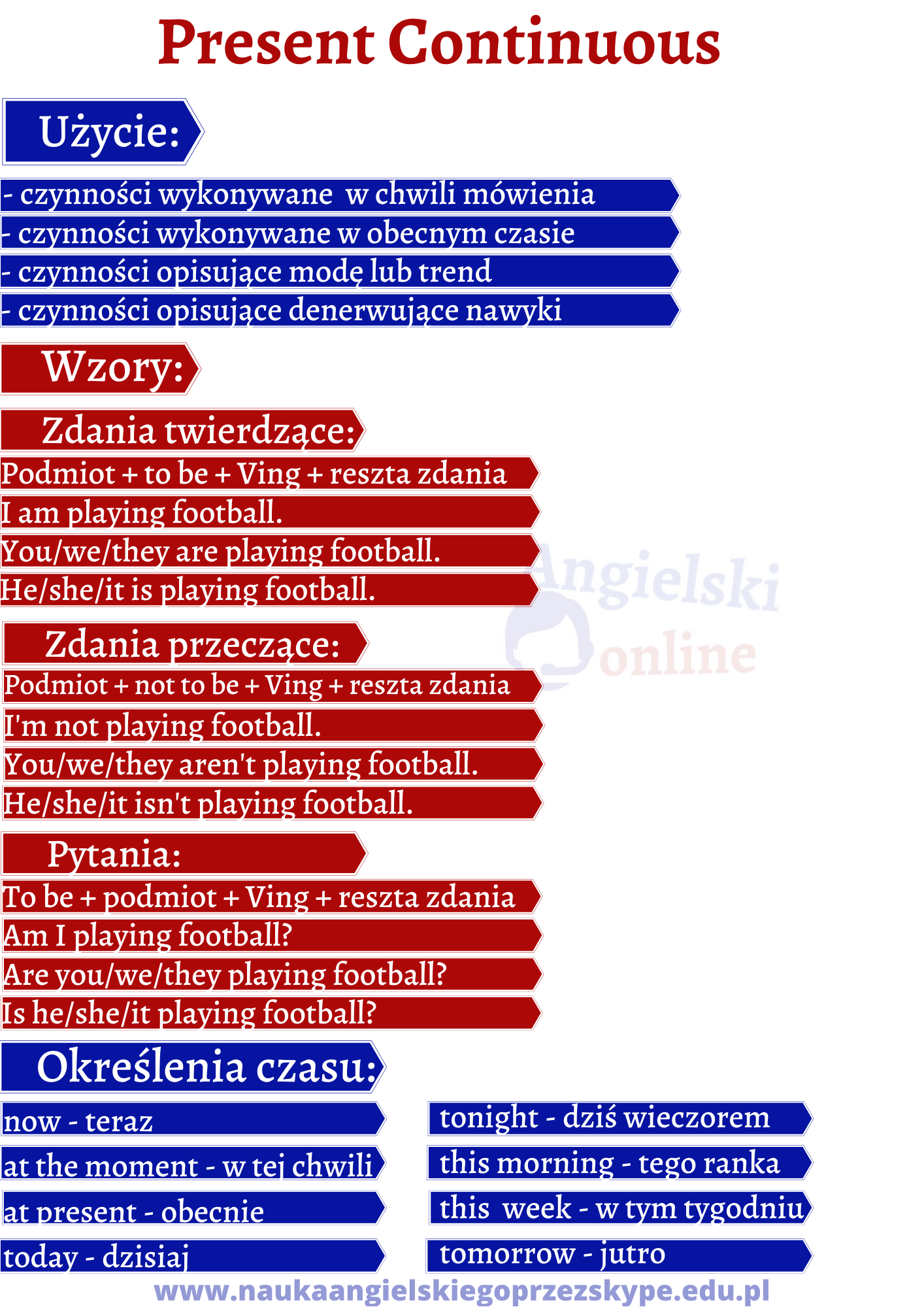
Present Continuous określenia czasu Nauka angielskiego przez Skype
Szybka powtórka najważniejszych informacji o Present Continuous:- kiedy używać- jak tworzyć- z jakich określeń czasu korzystać

Present Simple vs Present Continuous Zasady i Praktyczne Ćwiczenia
The present continuous tense normally requires a dynamic verb. Verbs that instead describe a state of being such as emotion, belief, perception, or possession are called stative verbs. Some examples include "prefer," "appear," "exist," and "own.". Stative verbs should not be used in the present continuous tense.

The English Blog 6th GRADE (PRESENT CONTINUOUS)
In the present continuous, the action is happening now. For example: I am eating now. Here the action of "eating" is taking place now. In comparison, the present perfect continuous indicates that the action has started in the past and is continuing in the present. For example: She has been learning Ballet since 2020.

Sprawdź, czy poprawnie stosujesz czasy present perfect (simple i
The present continuous (present progressive) tense is a way to convey any action or condition that is happening right now, frequently, and may be ongoing. It adds energy and action to writing, and its effect helps readers understand when the action is happening.

Quintos CEP Felipe II
Level: beginner The present continuous is made from the present tense of the verb be and the -ing form of a verb: We use the present continuous to talk about: activities at the moment of speaking: I'm just leaving work. I'll be home in an hour. Please be quiet. The children are sleeping. Present continuous 1 Present continuous 2

PRESENT CONTINUOUS kiedy używamy? 5 zastosowań które powinieneś znać
Present Simple. Present Continuous. Things which are always true: Water boils at 100 degrees. Things which are happening at the moment of speaking: The water is boiling now, so you can put in the pasta. Permanent situations (or nearly permanent; true for a few years at least): Julie lives in London.

Present Continuous Czasy Czas teraźniejszy ciągły ELLA
🎬Jeśli nie zawsze wiecie, kiedy użyć czasów Present Simple oraz Present Continuous to zapewniam Was, że jesteście w najlepszym miejscu, aby to naprawić. Po.
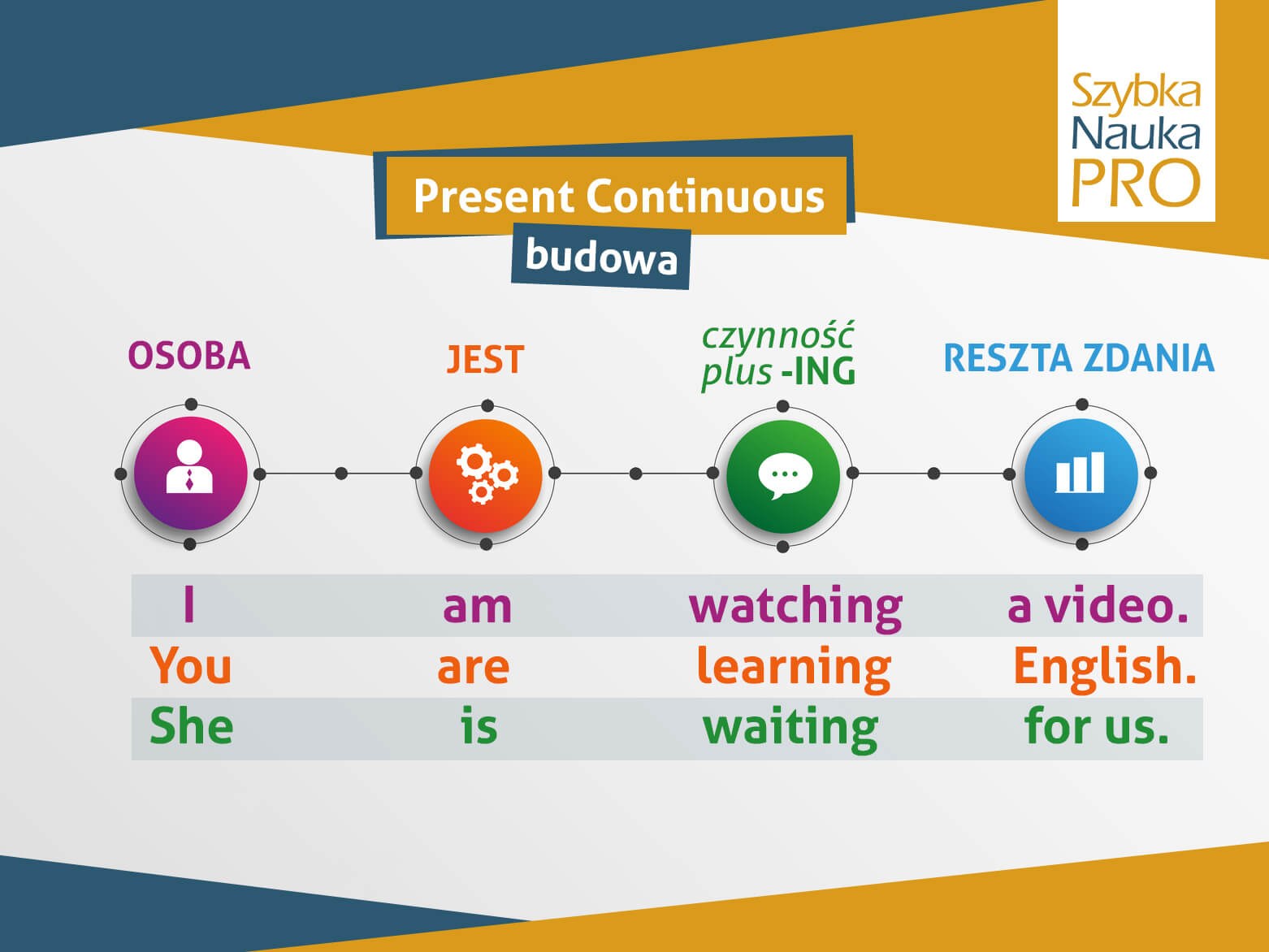
Present Continuous w 24 minuty
Wiadomo. Ale teraz, czy tak w ogóle? O teraźniejszości w języku angielskim możemy mówić na kilka sposobów. Dwa najważniejsze to właśnie Present Simple i Present Continuous. I wiem, że to jest.
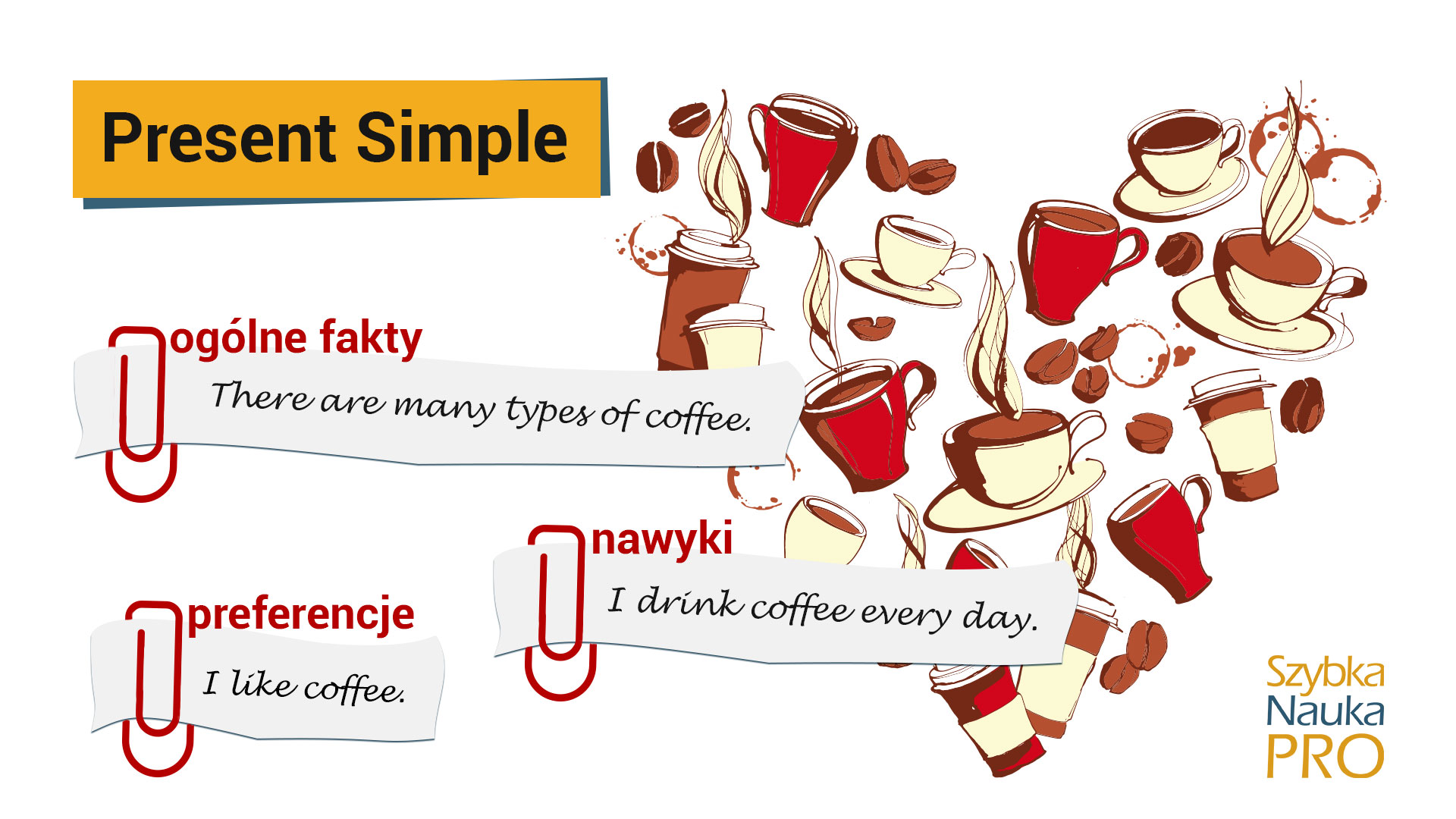
Present Simple vs Present Continuous Zasady i Praktyczne Ćwiczenia
Alternatively, consider sending the video link to your learners for a "flipped" class or for remote learning. Grammar Worksheet. Present Continuous. Use the 'ing' form of the verbs to describe. the picture. Answer Key on Page 2. Level: Beginner to Elementary. Time: Approx 10 minutes.
ONE TWO THREE, SILENCE PLEASE! grammar 5th primary present continuous
Present Continuous, czyli czas teraźniejszy ciągły, to czas pozwalający nam m.in. wyrazić to, co dzieje się w tym momencie. Jego konstrukcja jest nieco trudniejsza niż konstrukcja czasu Present Simple, ale jest bardzo łatwy w użyciu. W języku angielskim jest stosowany bardzo często, więc warto się go nauczyć.

Kiedy używamy Present Continuous? Wszystko co musisz wiedzieć o czasie
Definition of the Present Continuous Tense. The Cambridge Dictionary defines the 'present continuous tense' as "the verb form used for actions or events that are happening or developing now." According to the Collins Dictionary, the present continuous tense is defined as "a verb form consisting of an auxiliary be in the present tense followed by a present participle and used.

Kiedy używamy czasu Present Continuous YouTube
Present Continuous - kiedy używać? Do określania czynności, które dzieją się teraznow, at the moment,. Do mówienia o zmiennej sytuacjimore and more, now, recently,. Do określenia czasowych sytuacji/czynnościthese days, for a few days, today,. Do mówienia o denerwujących nawykachalways, never, all the time,.
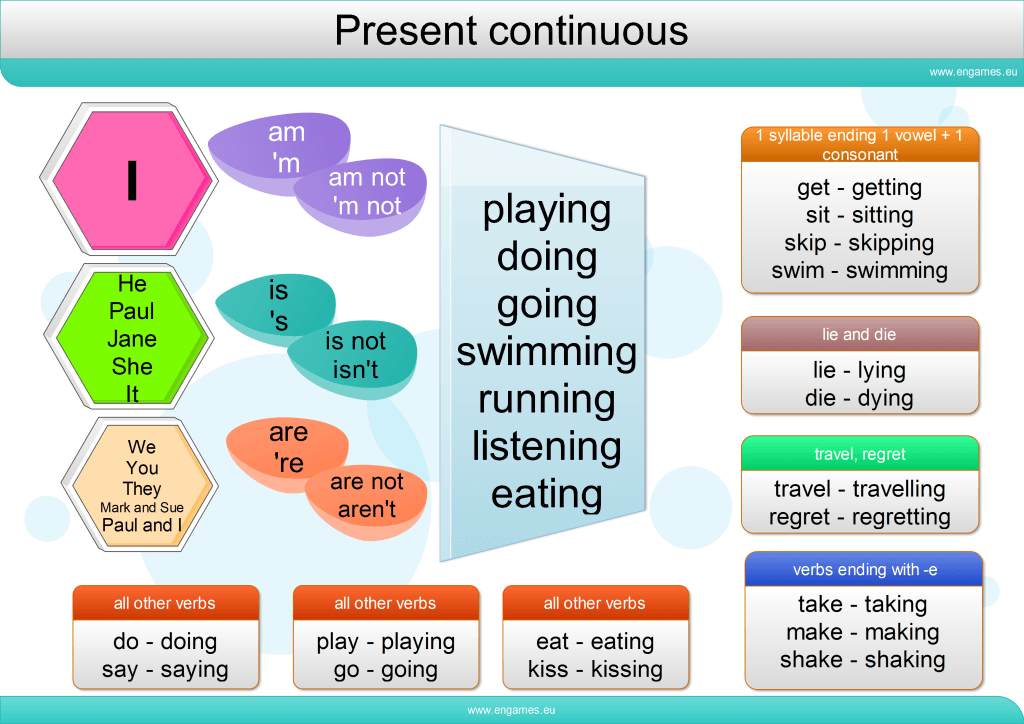
Present continuous tense Games to learn English
Like we already discussed, the present continuous is a very useful tense for natural-sounding conversations with English speakers. In fact, we use it daily and it has a number of different uses. Another reason to learn it is that, if you want to know all the English tenses, the present continuous is a great place to start.
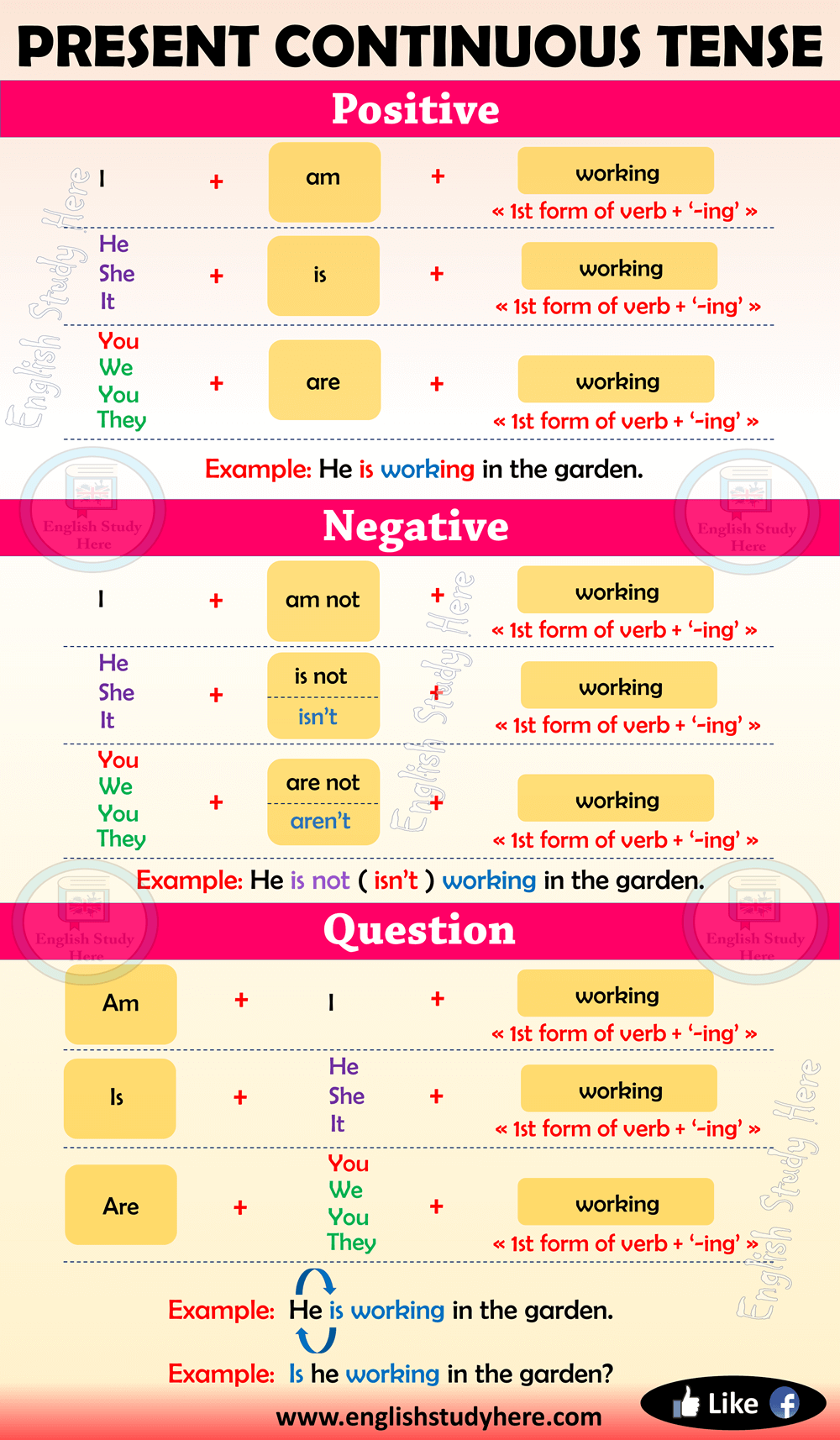
Present Continuous Structure
Czas Present Simple stosujemy, gdy mówimy o naszych zwyczajach lub czynnościach, które często wykonujemy. Natomiast Present Continuous używamy do opisywania czynności lub zdarzeń, które mają miejsce w danym momencie. A jak rozpoznać kiedy stosujemy Present Simple a kiedy Present Continuous?